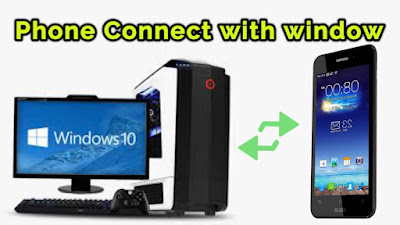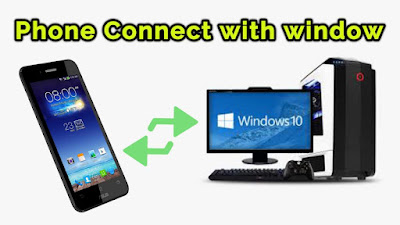How to Seamlessly Link Your Android Phone with Your Windows PC via Cable
In the modern age of technology, the integration between our most used devices - our Android smartphones and Windows PCs - can significantly enhance our productivity and streamline our digital activities.
Whether you're transferring files, managing photos, or simply wanting to ensure a stable connection without relying on Wi-Fi, linking your Android phone with your Windows computer via cable is a straightforward and efficient solution. This guide will walk you through the simple steps to establish this connection, ensuring a seamless integration between your devices.
Step 1: Gather What You Need
Before you begin, ensure you have a compatible USB cable - ideally, the one that came with your Android device. This cable should have a USB Type-A connector on one end (for your PC) and a USB Type-C or Micro-USB connector on the other end (for your Android phone), depending on your device's charging port.
Step 2: Enable USB Debugging (Optional)
For a more in-depth connection that allows for tasks such as file transfers, app debugging, and more, enabling USB debugging on your Android device is recommended. To do this, you need to access the Developer Options. Here's how:
Open the Settings app on your Android device. Scroll down and select 'About phone.'
Find 'Build number' and tap it seven times in quick succession to enable Developer Options.
Go back to the main Settings menu, and you should now see 'Developer options.' Tap into it.
Scroll until you find 'USB debugging' and toggle it on.
Step 3: Connect Your Android Phone to Your Windows PC
Take your USB cable and connect one end to your Android phone and the other to an available USB port on your Windows PC. Upon doing so, your Android device might prompt you with a notification asking what you want to do with the USB connection. Common options include 'File Transfer,' 'Photo Transfer (PTP),' 'USB Tethering,' and 'No data transfer.'
Step 4: Choose the Right USB Option
For most users looking to manage files or photos, selecting 'File Transfer' or 'Photo Transfer (PTP)' will be the way to go. Once selected, your Windows PC should recognize the device and may automatically open the File Explorer, showing your device's storage as an external drive. If it doesn't pop up automatically, you can manually navigate to 'This PC' in the File Explorer, where your device should be listed under 'Devices and drives.'
Step 5: Safely Disconnect
Once you've finished transferring files or managing your device, it's important to safely disconnect your Android phone to prevent any data loss. You can do this by closing any open files or windows that are accessing your phone's storage and then ejecting your device from the system tray or by using the 'Safely Remove Hardware and Eject Media' option in Windows.
Frequently Asked Questions: Linking Your Android Phone with Windows via Cable
Q1: Do I need to install any software on my Windows PC to connect my Android phone via cable?
A1: Generally, no additional software is needed for basic file transfers. Modern Windows operating systems (Windows 7 and later) should automatically recognize your Android device and install the necessary drivers. However, for specific tasks or to use certain features, you might need to install your phone manufacturer's software (such as Samsung's Kies, OnePlus's Sync, or Google's Android File Transfer for Mac users).
Q2: Why isn't my PC recognizing my Android device when I connect it via USB?
A2: If your PC doesn't recognize your Android device, try the following troubleshooting steps:
Ensure the cable you're using is functional and supports data transfer.
Check if USB debugging is enabled on your Android device, as this can sometimes interfere with basic file transfer settings.
Try connecting to a different USB port on your PC.
Look for any notifications on your Android device that may require your approval to connect.
Restart both your Android device and your Windows PC.
Update your device's drivers through the Device Manager on your PC.
Q3: Can I charge my Android phone while it is connected to my Windows PC?
A3: Yes, your Android phone will charge while connected to your PC via USB. However, the charging speed may be slower than when using a wall charger because the USB ports on computers typically deliver less power.
Q4: How do I transfer files from my Android device to my Windows PC?
A4: After connecting your Android device to your PC and selecting 'File Transfer' mode, open the File Explorer on your PC. Navigate to 'This PC,' where your device should be listed. Double-click on it to open and access the internal storage or SD card. From there, you can drag and drop files between your device and your PC.
Q5: What should I do if file transfer via USB is not working?
A5: If you're having trouble transferring files, ensure that your device is unlocked and that you've selected the correct USB option for file transfer. If issues persist, try restarting both your device and PC, checking your USB cable, or trying a different USB port. Additionally, ensure that USB debugging is enabled if required for your specific needs.
Q6: Is it safe to use USB debugging? What is it exactly?
A6: USB debugging is a mode on Android devices that allows them to communicate with computers for development purposes, such as app testing or direct commands. While it's generally safe to use, it can expose your device to risks if connected to an untrusted computer. It's advisable to keep USB debugging disabled when not in use and only enable it when necessary, ensuring you're connecting to a secure and trusted PC.
Q7: Can I use a wireless method instead of a cable to link my Android phone with my Windows PC?
A7: Yes, there are wireless methods to connect your Android device to your Windows PC, such as Bluetooth, Wi-Fi Direct, or using apps like Microsoft's Your Phone, which allows for wireless file transfer, notifications syncing, and even mirroring your phone's screen on your PC. However, these methods might not be as fast or stable as a wired connection for transferring large files.
By understanding these FAQs, you'll be better equipped to tackle any issues that arise while linking your Android phone with your Windows PC via cable, ensuring a smooth and efficient connection.
Conclusion about the link phone with window
Linking your Android phone with your Windows PC via cable is a simple yet effective way to ensure a stable connection for managing files, photos, and more. By following the steps outlined above, you can enjoy a seamless integration between your devices, enhancing your productivity and making the most out of your digital experiences. Remember to safely disconnect your device after use to keep your data secure and your devices running smoothly.





